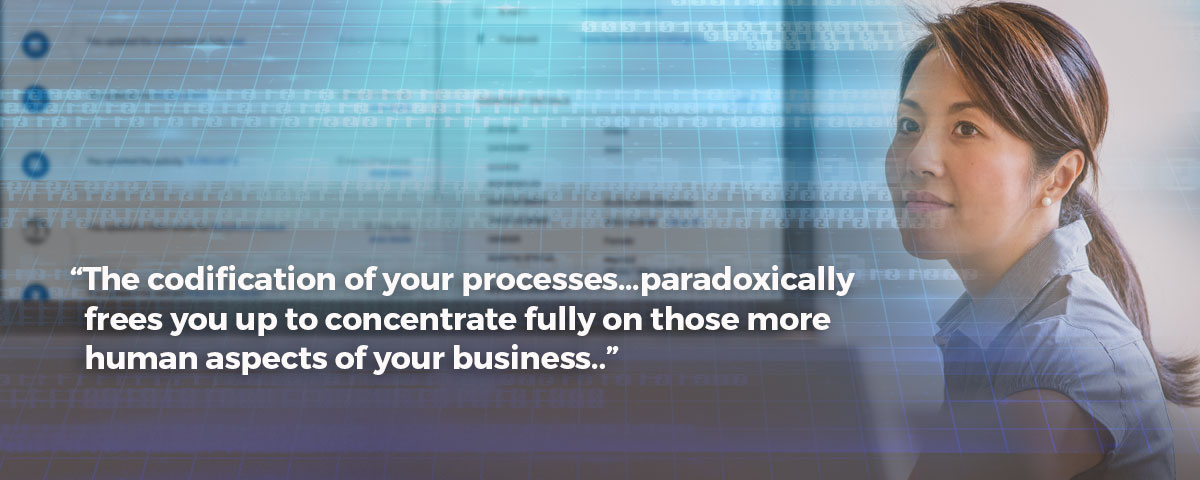Use Your Tech Tools To Codify Consistency
Use Your Tech Tools To Codify Consistency

Is your office consistent in terms of how it goes about handling the client onboarding process? In how it goes about managing and meeting client expectations? How about in terms of carefully documenting all interactions with clients?
Of course, it’s not news to you that demonstrating a steady hand on the wheel in regard to your clients’ finances can go a long way toward easing their worries during volatile markets and preventing client defection. That said, consistency should be the beating heart of your client experience, a given that clients may not even consciously register but rely on nonetheless. Long term, consistency can also prove invaluable in terms of satisfying many of the compliance or regulatory requirements you may be subject to, including the new DOL rules, as it’s easier to demonstrate compliance when your processes and interactions are clear and well-documented.
Unlike many of the changes you can implement in your business or business processes though, consistency, by its very nature, isn’t a quick-fix solution, but rather a state arrived at over months and years of continuously exhibiting that one is, in fact, consistent.
So, what are some of the ways you can go about improving consistency in your practice?
Commitment is key
Consistency is unlikely to be achieved haphazardly, half-heartedly or by treating each process and interaction as a one-off event. Both you and your staff will need to be vigilant in your commitment to consistency, if everyone is to consistently deliver. While your staff may understand this as well as you, spoken reminders may be necessary for some time if you want to ramp up office-wide performance in this area. You don’t want to cajole needlessly, but everyone needs a reminder now and again. We get busy, and our focus on projects or other pressing matters can sometimes cause us to neglect the details (at least until those details are codified and have become second nature). But, if consistency is to be a sustainable attribute of your business, at some point you must move beyond cajoling to codification. Aside from the commitment itself (commitments can waver), there are some specific ways to codify consistency.
Uniform adoption of your tech tools
Tech usage in your office is likely to vary, even if you’re the only one in the office. While it can prove difficult in some cases to get everyone on board and using the tech tools you have decided will best fit your office needs, well-utilized technologies offer the most efficient path toward achieving consistency.
Set a good example by using your technologies yourself while also determining how best to make sure everyone else uses your tools appropriately. It may simply be a matter of education, i.e., showing them how your tools will make their working days easier and more productive. For others, it may require stronger incentives to enforce usage. Regardless, in today’s busy and competitive advisory practice, usage of your tech tools shouldn’t be perceived by your employees as optional, but rather as one of the job requirements.
We’re only human
You’ve probably read a lot of pieces that talk about how technology frees up time for advisors so that they can spend more time actually meeting with clients and prospects, stamping their advice with a human face and presence. That’s true. That’s one of the reasons tech is so important – it improves efficiencies. But, it’s the “human” part of the tech processes that I’m interested in here, or, rather, the human bits that tech can so adequately compensate for, such as forgetfulness, hastiness, inattentiveness, etc.
If one of your processes can be converted into a Workflow in your CRM (and, invariably, it can), convert it into a Workflow. This is important if you work alone – its importance multiplies with every person that has some responsibility for seeing to it that the process is handled. Codifying your processes as Workflows ensures that every part of a process is handled completely and within the timeframe you’ve established for the process. Humans aren’t removed from your processes, but instead become much less likely to let important components of your processes slide because your Workflows prompt them every step of the way.
If Automations with Triggers and Actions can be set up within some of your tech tools, set them up today. Any time you don’t take advantage of these features of your tools, you’re not only costing yourself and your staff time but also leaving the door open for inconsistencies or errors. If you can make an action automatic based upon a triggering event, you’re immediately improving the consistency of your office the moment you set that automation up.
If integrations exist between the tech tools your office uses, take advantage of them. When advisor technologies “talk” to one another, it greatly increases the probability that those expected to use those tools will do so. Whether you’re looking at the accumulation over time of a couple of seconds saved here and there via Single Sign-On or the massive time savings accomplished through data transfer between integration platforms, establishing where your data is initially entered and which tools should be used in which scenarios shouldn’t be left up to individual staff members. You or someone on your staff should stay up-to-date about new integration opportunities between the tools your office uses, implement those integrations when they hold promise for streamlining or improving your processes, and instruct other staff members once the implementation is in place.
Human is good
I’ve argued above about the importance of consistency (achieved via tech), but don’t want to minimize the importance of the human. You aren’t a robo-advisor and personalization of every interaction when possible is a huge benefit for your business in terms of building relationships and trust. But, when it comes to your tried-and-true processes for onboarding, documentation, compliance, etc., machine-like precision is a plus. The codification of your processes, while allowing you to make giant strides in terms of consistency, paradoxically frees you up to concentrate fully on those more human aspects of your business.




